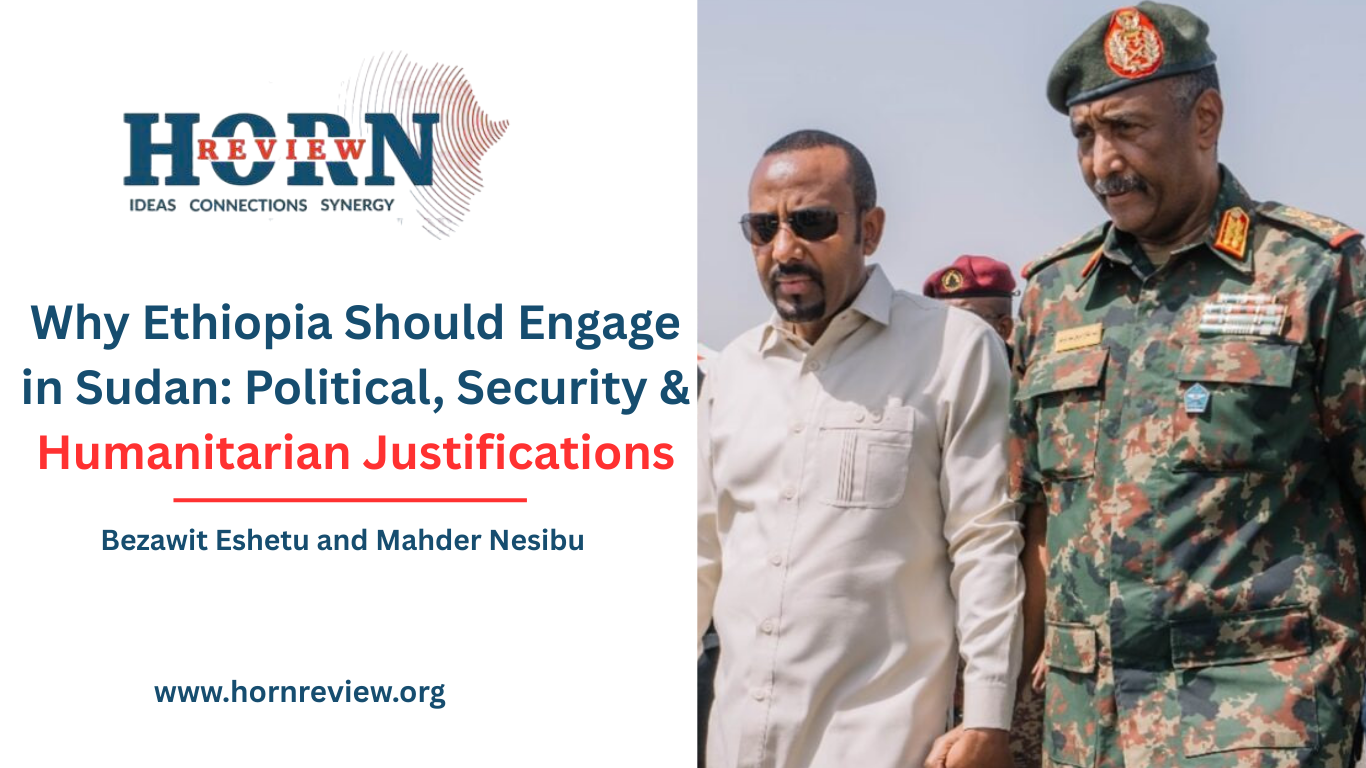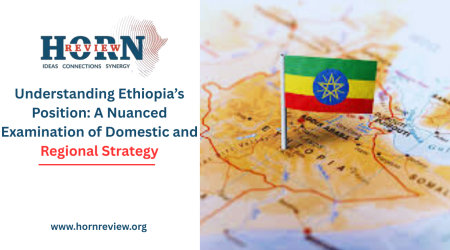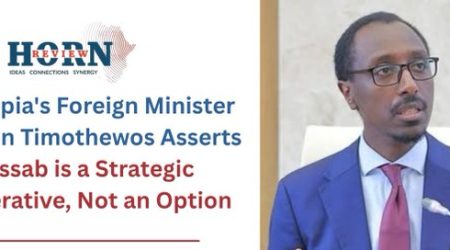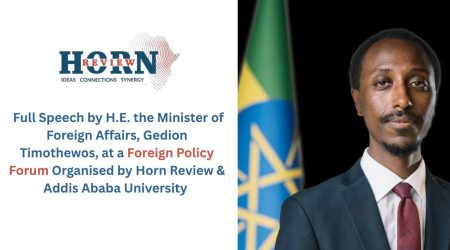
25
Nov
Why Ethiopia Should Engage in Sudan: Political, Security & Humanitsrian Justifications
As Sudan’s civil war enters its third year, the conflict shows no sign of abating. Renewed offensives have deepened a humanitarian catastrophe whose scale constrains every political option. Humanitarian agencies estimate displacement in the millions and needs across large portions of the country, placing acute strain on medical, nutritional, and logistics systems and narrowing the range of feasible short-term interventions. Those operational realities mean that any political strategy must first secure reliable, verifiable windows for aid before other measures can hold political traction.
The fighting persists because battlefield dynamics are reinforced by external supply lines, regional incentives, and commercial channels that convert combat revenue into sustainment. Open-source investigations, U.N. reporting, and human-rights inquiries have documented modern guided munitions, artillery and other materiel on Rapid Support Forces battlefields consistent with re-export and opaque routing; forensic techniques such as serial-number tracing and flight-track analysis frequently point away from simple state-to-state transfers and toward intermediary firms, transit hubs, and logistics nodes. That forensic picture matters because it defines what policy can credibly do: diplomacy that aims only at state-level actors is unlikely to choke the material flows that shape the balance on the ground.
Washington’s posture has shifted after a period of relative disengagement. In mid-November 2025 President Trump publicly indicated willingness, at Saudi Arabia’s request, to act to help end the war—a signal that U.S. policymakers are prepared to press Gulf and regional partners. The composition of America’s foreign-policy team, including Marco Rubio’s confirmation as secretary of state earlier in 2025, has also influenced how Washington publicly frames coercion, arms flows and the use of regional pressure. These changes matter less for rhetoric than for how the United States chooses to synchronize intelligence, financial measures and diplomatic pressure with partners who can affect the conflict’s logistics chains.
Because so much of the conflict’s sustainment runs through commercial and quasi-commercial networks, practical policy must combine precise forensic logistics with calibrated diplomacy and enforcement. The accumulated evidence – satellite imagery, serial-number tracing, flight-tracking data and witness testimony compiled by U.N. panels, rights groups and investigative journalists – consistently points toward intermediary vectors and transit hubs rather than straightforward, overt transfers between states. In consequence, policy that rests on high-level diplomatic entreaties alone will not sever the channels that keep the fighting resourced. Targeted measures against discrete firms, carriers, freight forwarders and financial intermediaries, backed by coordinated intelligence sharing and legal inquiry, can raise the costs of re-export and make supply chains more transparent.
The humanitarian scale both constrains and shapes political choices. Tens of millions of people require assistance while displacement numbers have reached the millions, producing immediate operational limits: overwhelmed hospitals, acute malnutrition, disease outbreaks, and blocked corridors. Any security or political initiative that fails to guarantee predictable and independently verifiable humanitarian corridors will lack credibility with civilians and aid providers alike. Verified pauses for aid delivery are therefore not an add-on; they are the precondition for stabilization efforts capable of securing local buy-in and sustaining a political process.
Political economy constrains blunt responses. Allegations that private networks linked to Gulf actors have been used to re-export materiel complicate efforts to confront states that remain essential partners on counterterrorism, basing and diplomacy. The political cost of confrontation is therefore high. At the same time, an expanding forensic record drawn from U.N. reporting, human-rights organizations, and investigative journalism has created diplomatic space for selective accountability. Turning that momentum into measurable effect requires coordinated intelligence sharing, the public naming of commercial actors only when evidence is robust, and narrowly tailored measures – criminal investigations, sanctions, licensing restrictions and enforcement actions – that focus on logistics nodes rather than entire states; this preserves essential security partnerships while striking at the channels that sustain the fighting.
The United Arab Emirates figures prominently in many of these inquiries. Multiple investigations and reporting by expert panels, rights groups and independent journalists have alleged patterns of arms and logistics transfers routed through opaque commercial networks, air-cargo routes and regional intermediaries; forensic tracing of seized munitions and imagery has added weight to those allegations. The UAE has denied direct state involvement and has pointed to internal reviews, but multilateral scrutiny – including U.N. panel investigations and rights-group reporting – has moved some questions toward institutional inquiry. Strategically, Abu Dhabi’s investments, basing arrangements and security partnerships give it leverage; that same posture means reputational and legal exposure can carry costs for broader cooperation. The practicable policy implication is clear: pressure should be surgical, focused on the commercial conduits that enable re-export, rather than framed as a wholesale rupture with Gulf partners.
Proximate leadership is a practicable lever in the current strategic environment. Ethiopia’s geographic and political closeness to Sudan gives it two distinct advantages: easier access to senior actors and a sustained institutional role within regional architectures that more distant powers lack. Those advantages matter because diplomacy often depends less on abstract pressure and more on consistent presence, credible channels of communication and an ability to translate leverage into technically enforceable arrangements.
Ethiopia’s mediation record offers useful precedents across different eras and approaches to intervention. In the mid-20th century, Emperor Haile Selassie’s convening role helped produce immediately meaningful compromises; the 1972 Addis Ababa Agreement, brokered with Ethiopian facilitation, granted the South regional autonomy and established interim institutions for local administration, temporarily reducing large-scale fighting while creating space for governance. That agreement also contains a cautionary lesson: settlements anchored mainly in elite guarantees and momentary prestige, without durable institutional mechanisms or broad social inclusion, are vulnerable to reversal.
A more institutionalized model emerged under Meles Zenawi. As a prominent voice within the Intergovernmental Authority on Development, Meles combined Ethiopia’s economic and security leverage with regional mediation structures to press for detailed technical compromises. That multilateral, architecture-based approach contributed to the Comprehensive Peace Agreement of 2005, which included explicit provisions on governance, wealth-sharing, security arrangements and a referendum mechanism that ultimately produced South Sudan’s independence. The Meles example shows how organized regional architecture backed by concrete leverage can convert openings into enforceable political arrangements. It also shows the tradeoffs: selective backing and visible pressure can erode perceived neutrality and complicate later reconciliation, so presence and prestige must be matched by impartial verification and inclusive follow-through.
Recent events underline Addis Ababa’s continued practical relevance to the Sudan conflict. In late December 2023 the RSF leader Mohamed Hamdan “Hemedti” publicly included Addis Ababa on a regional tour, signaling that the RSF still values direct channels with Ethiopian officials and regards the capital as a viable interlocutor. And Prime Minister Abiy Ahmed’s July 2024 meeting with Sudan’s army chief, General Abdel Fattah al-Burhan, in Port Sudan established Ethiopia as one of the few neighboring capitals with active lines to the army leadership. Taken together, these contacts give Addis Ababa practical access to both sides and the capacity to convene, shuttle and press for immediate confidence-building measures, including localized pauses, mediated prisoner exchanges, or constrained humanitarian corridors, all of which can buy time for broader multilateral processes.
That proximate access, however, carries political risk and therefore requires explicit risk management. Visible engagement with one or the other party invites charges of partiality, especially where mediation overlaps with narrowly framed national security interests; targeted legal measures can provoke backlash if perceived as unilateral or poorly substantiated. These risks are manageable only when Ethiopian initiatives are demonstrably multilateral, anchored in clear standards of evidence, and tied to coordinated enforcement. Regional sensitivities will also shape responses: downstream actors and others sensitive to Nile politics, notably Egyptian stakeholders attentive to the Grand Ethiopian Renaissance Dam, view Ethiopian moves through a skeptical lens; that skepticism must be met with institutionalized transparency and inclusive consultation rather than used as a pretext to block engagement.
Operationally, proximate diplomacy and enforcement should be synchronized. Forensic logistics and intelligence sharing must be harmonized with legal inquiries and coordinated financial measures to close intermediary loopholes. On the ground, agreed monitored cantonments, neutral inspection teams for demobilization and independently observed humanitarian pauses create the space needed for political bargaining. Where evidence is clear, naming and targeting culpable commercial actors imposes reputational and legal costs that can deter re-exports without rupturing broader strategic partnerships. Above all, predictable humanitarian access and independent monitoring must be guaranteed so aid is never turned into a bargaining chip. When credibly embedded in a multilateral architecture, Ethiopia’s practical access to principals becomes an operational advantage rather than a political liability, increasing the odds of stabilizing humanitarian operations and opening space for a Sudanese-led settlement.
By Bezawit Eshetu and Mahder Nesibu, Researcher, Horn Review










